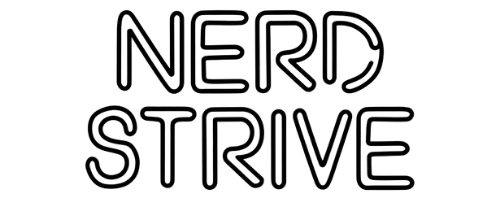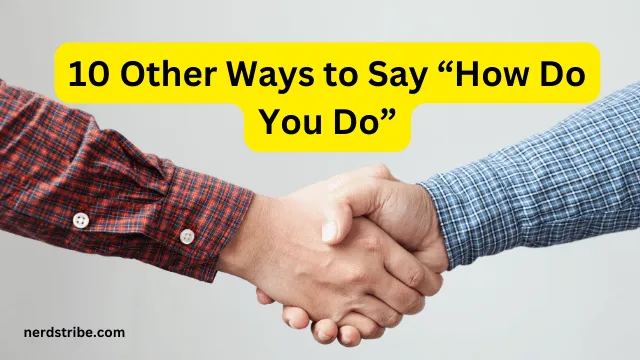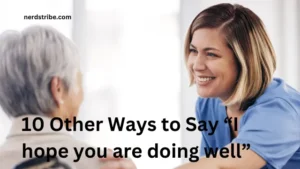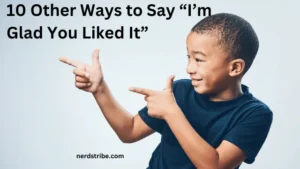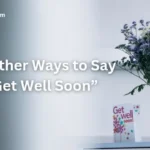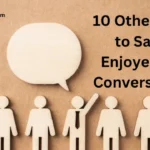Greetings are the gateways to every conversation. When we say, “How do you do?” we’re following a polite, traditional script—but what if you could make your opening line more memorable?
In a world where first impressions matter, using varied and thoughtful greetings can set the tone for meaningful connections. Whether it’s a formal introduction, a casual meetup, or a business encounter, your greeting speaks volumes about your personality and intent.
Shaking up the usual “How do you do?” with alternative phrases adds flair, warmth, or professionalism, depending on the occasion. It’s not just about words; it’s about showing genuine interest in the person you’re addressing.
In this article, we’ll dive into 10 creative and context-appropriate alternatives to “How do you do?” From casual and friendly to polished and professional, these options will help you connect better, stand out, and leave lasting impressions in every interaction.

Contents
- 1 1. Hello / Hi
- 2 2. Good Morning / Afternoon / Evening
- 3 3. Pleased to Meet You / Nice to Meet You
- 4 4. Greetings
- 5 5. Glad to Meet You
- 6 6. It’s a Pleasure
- 7 7. Lovely to Meet You
- 8 8. How Are You Doing Today?
- 9 9. What’s Up? / How’s It Going?
- 10 10. Delighted to Make Your Acquaintance
- 11 Conclusion
- 12 FAQs
- 12.1 Why should I use alternatives to “How do you do?”
- 12.2 Are all these greetings culturally appropriate?
- 12.3 What’s the best greeting for professional settings?
- 12.4 Can I use casual greetings in professional settings?
- 12.5 How can I ensure my greeting leaves a positive impression?
- 12.6 What if I’m unsure which greeting to use?
- 12.7
1. Hello / Hi
- Focus: Universal, simple, and adaptable for nearly any situation.
- Why It Matters: “Hello” leans formal, while “Hi” is casual and warm. Both are widely understood and easy to use.
- Example:
- “Hello, I’ve been looking forward to meeting you.”
- “Hi, how’s it going?”
2. Good Morning / Afternoon / Evening
- Focus: Adds a time-appropriate touch of politeness.
- Why It Matters: This greeting shows consideration for context and time of day.
- Example:
- “Good morning, I’m [Your Name]. It’s great to finally meet you.”
- “Good evening, I hope your day has been going well.”
3. Pleased to Meet You / Nice to Meet You
- Focus: Best for initial introductions in formal or semi-formal settings.
- Why It Matters: Expresses politeness and a positive attitude.
- Example:
- “Pleased to meet you, I’ve heard great things about you.”
- “Nice to meet you, thank you for taking the time to connect.”
4. Greetings
- Focus: A formal or even old-fashioned option.
- Why It Matters: Suitable for structured settings or to add an intellectual flair.
- Example:
- “Greetings, I hope you’re doing well today.”
- “Greetings, let me introduce myself—[Your Name].”
5. Glad to Meet You
- Focus: Warm and enthusiastic.
- Why It Matters: Conveys excitement and genuine happiness to meet someone.
- Example:
- “Glad to meet you, I’ve been hearing so much about your work!”
- “It’s great to finally connect—I’m glad to meet you.”

6. It’s a Pleasure
- Focus: Polished and elegant, often a response to introductions.
- Why It Matters: Shows respect and gratitude.
- Example:
- “It’s a pleasure to meet you, thank you for making time.”
- “It’s a pleasure; I’ve heard a lot about your expertise.”
7. Lovely to Meet You
- Focus: Informal and expressive, ideal for friendly settings.
- Why It Matters: Adds a personal and cheerful touch.
- Example:
- “Lovely to meet you, I’ve been looking forward to this.”
- “What a lovely surprise—it’s so nice to meet you!”
8. How Are You Doing Today?
- Focus: A conversational opening that invites interaction.
- Why It Matters: Encourages dialogue and builds rapport.
- Example:
- “How are you doing today? I’m excited we could finally connect.”
- “How’s everything going? I’ve been looking forward to this meeting.”
9. What’s Up? / How’s It Going?
- Focus: Casual and laid-back, perfect for friends or acquaintances.
- Why It Matters: Creates a relaxed and approachable vibe.
- Example:
- “What’s up? It’s been a while!”
- “How’s it going? Great to catch up with you.”
10. Delighted to Make Your Acquaintance
- Focus: Extremely formal and respectful, often reserved for professional or cultural settings.
- Why It Matters: Demonstrates high regard for the person being addressed.
- Example:
- “Delighted to make your acquaintance, Mr. [Last Name].”
- “It’s an honor; I’m delighted to meet you.”
Conclusion
Greetings are more than words—they’re an opportunity to express respect, warmth, or professionalism. By going beyond “How do you do?” you can tailor your greeting to suit the person, setting, and mood.
A thoughtful greeting helps you leave a positive impression and opens the door to meaningful interactions. From universal phrases like “Hello” to formal expressions like “Delighted to make your acquaintance,” the English language offers a range of greetings to enhance your communication.
Always consider the context and your relationship with the other person to choose the most appropriate one. When paired with genuine interest and positive body language, your words will create lasting connections.
FAQs
Why should I use alternatives to “How do you do?”
Using varied greetings keeps your conversations engaging, showing effort and thoughtfulness in your communication.
Are all these greetings culturally appropriate?
Most are universally accepted, but formal phrases like “Delighted to make your acquaintance” may not fit casual, global settings.
What’s the best greeting for professional settings?
“Good morning” or “Pleased to meet you” are safe and professional choices for formal environments.
Can I use casual greetings in professional settings?
Casual greetings like “Hi” or “How’s it going?” are better suited for informal work environments or colleagues you know well.
How can I ensure my greeting leaves a positive impression?
Pair your words with confident body language, a warm smile, and genuine interest in the conversation.
What if I’m unsure which greeting to use?
When in doubt, stick with neutral and polite options like “Hello” or “Good morning.” They work in nearly every situation.
